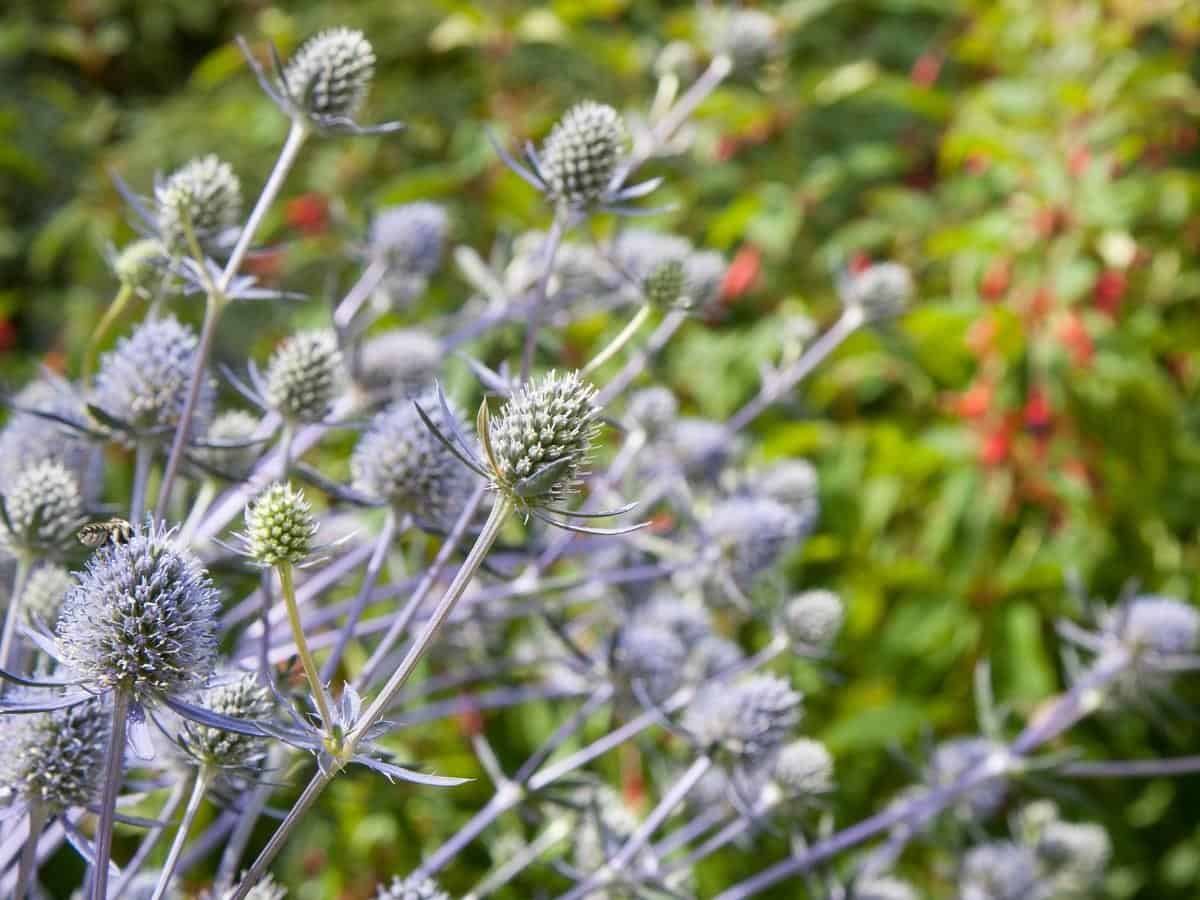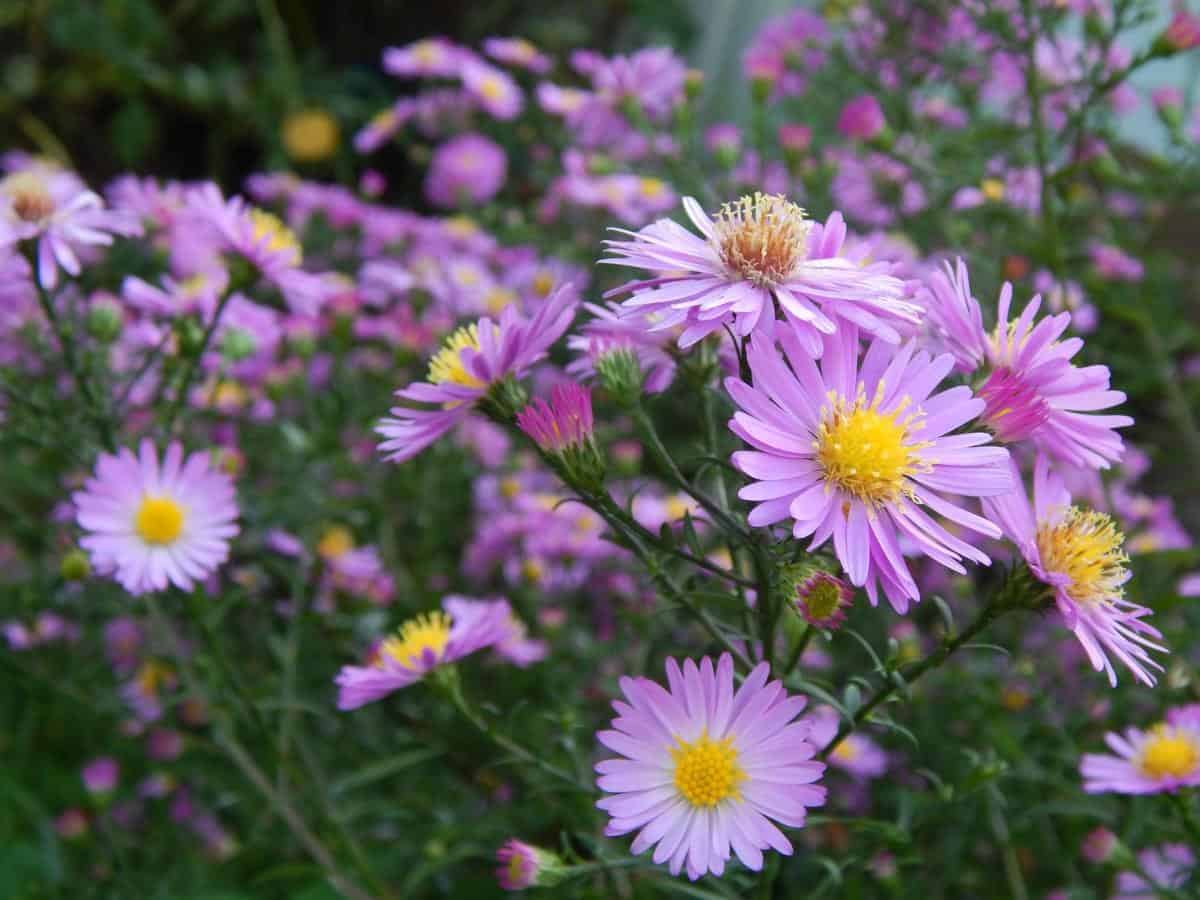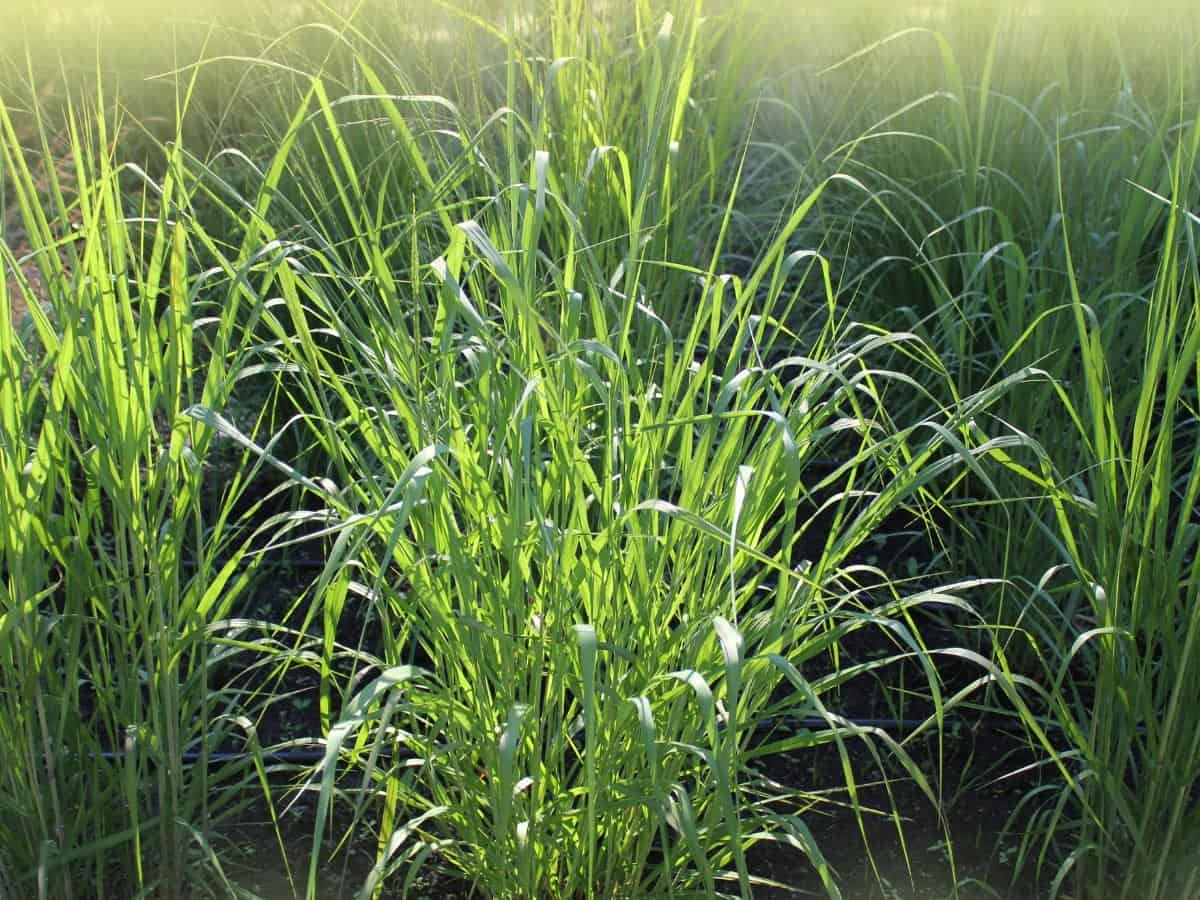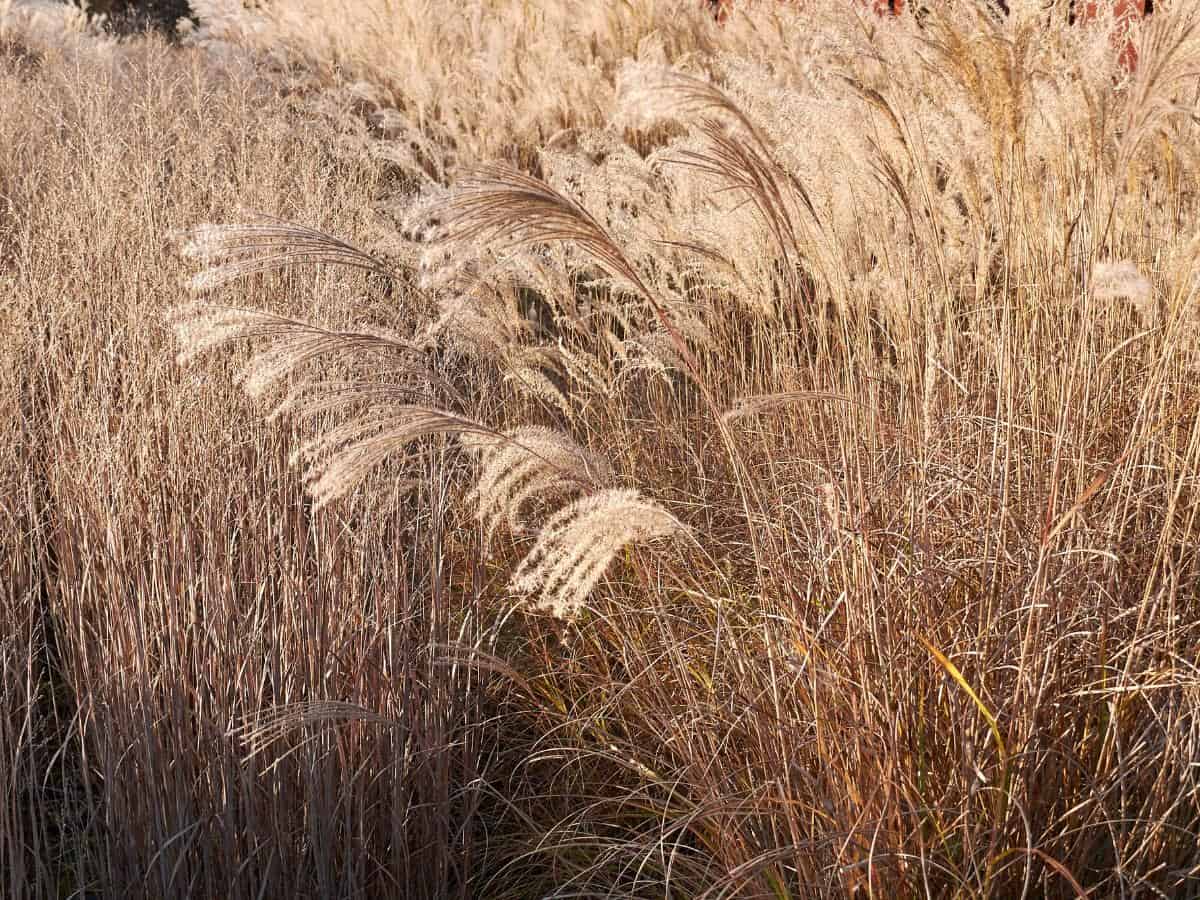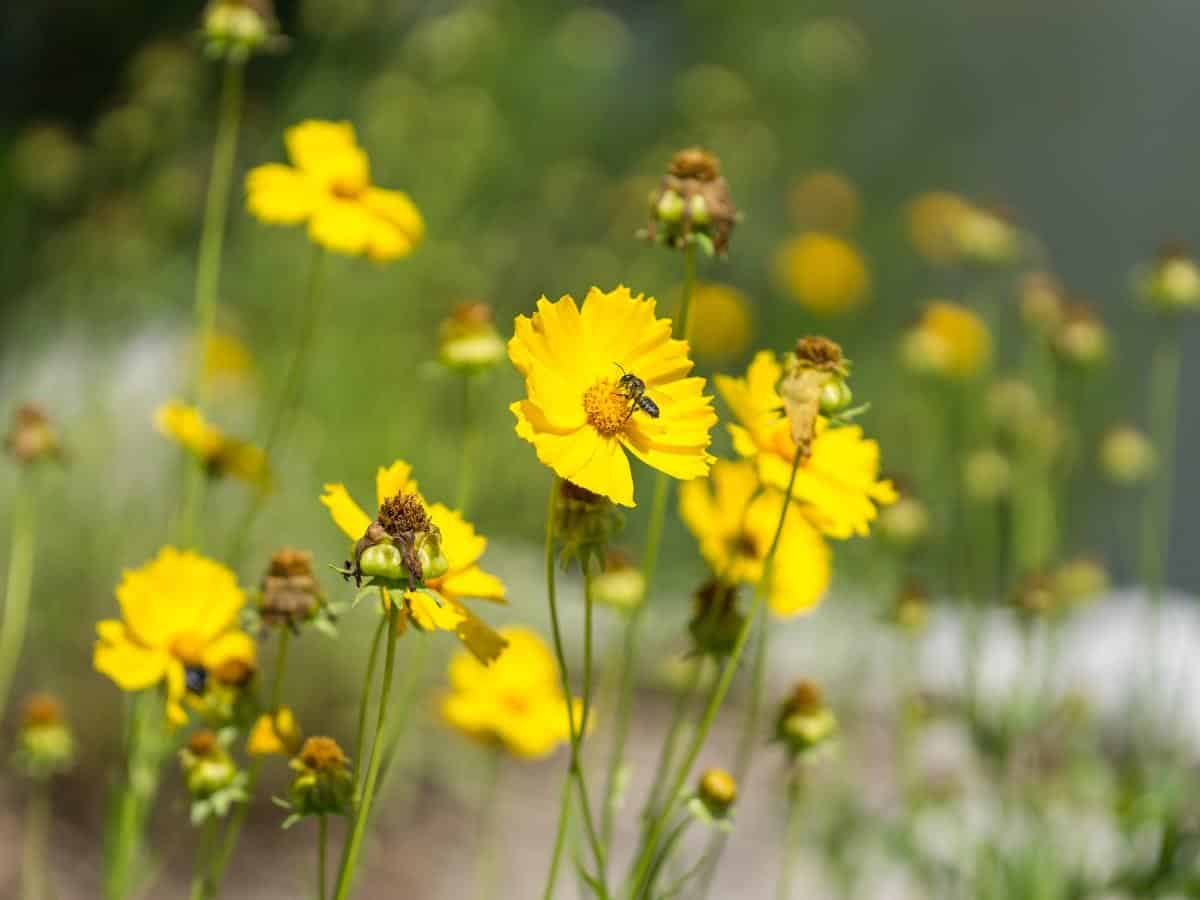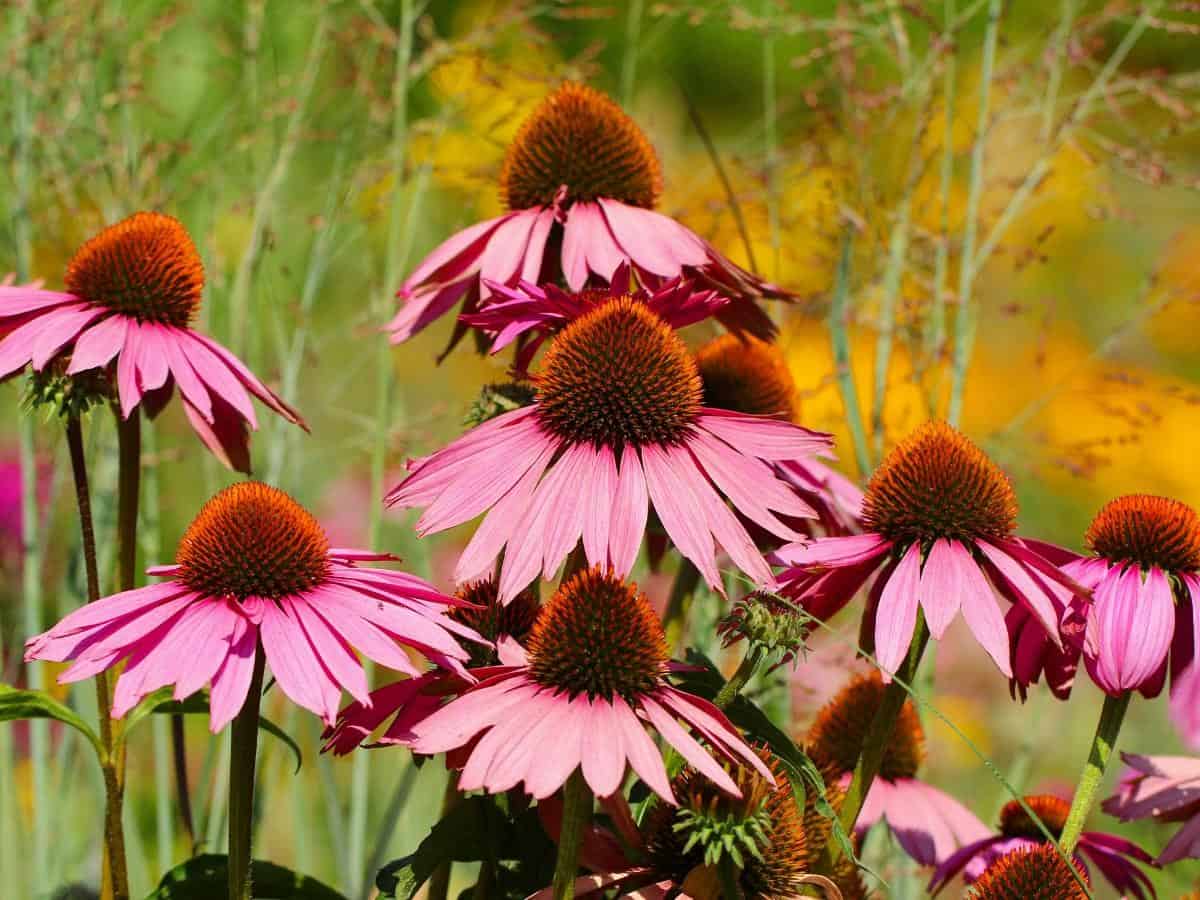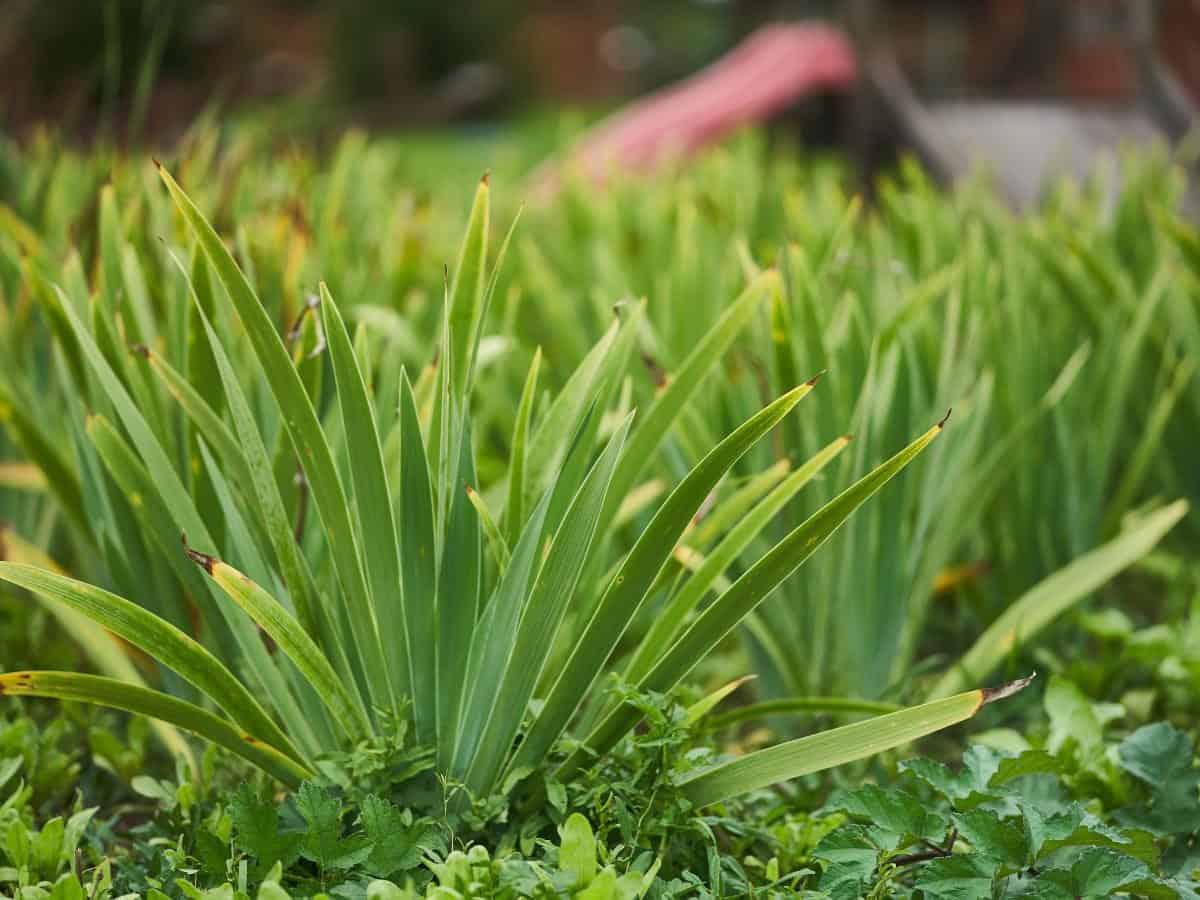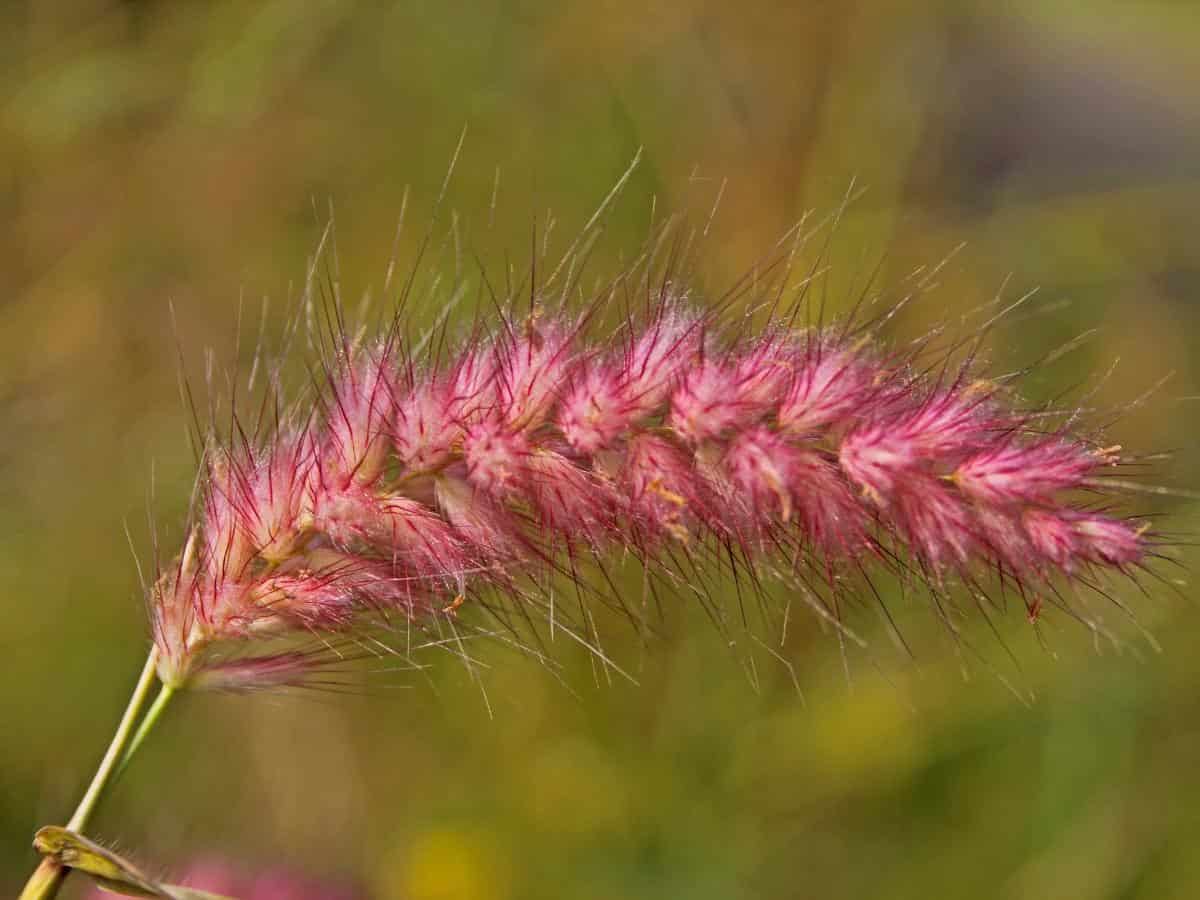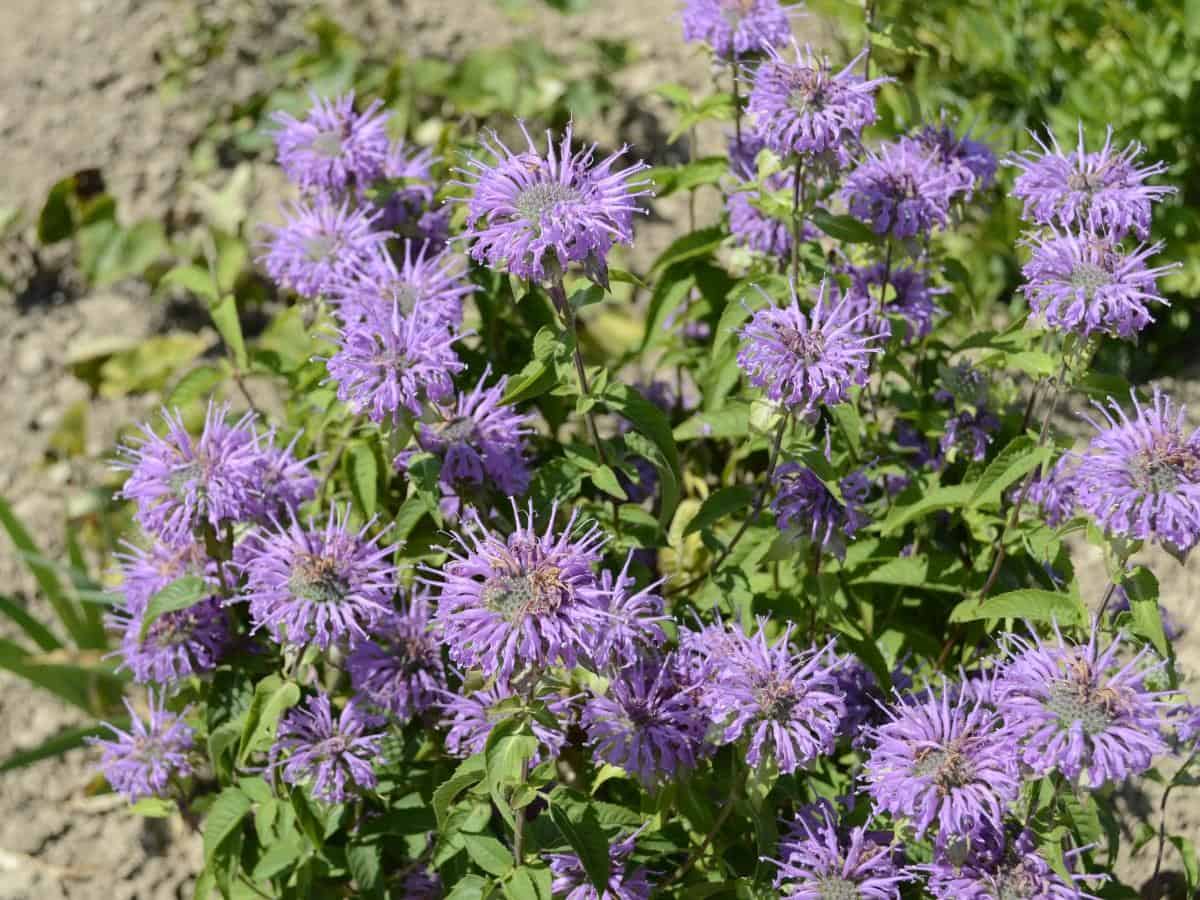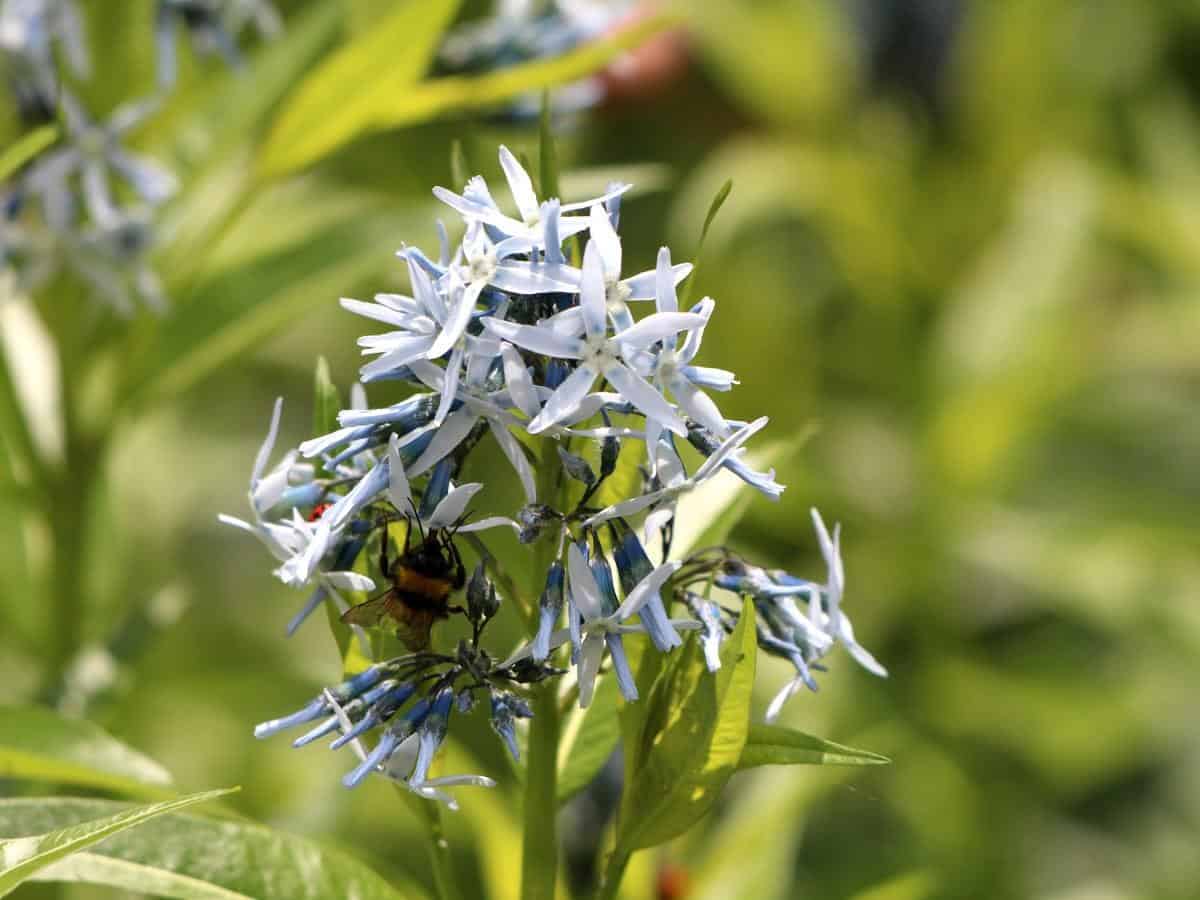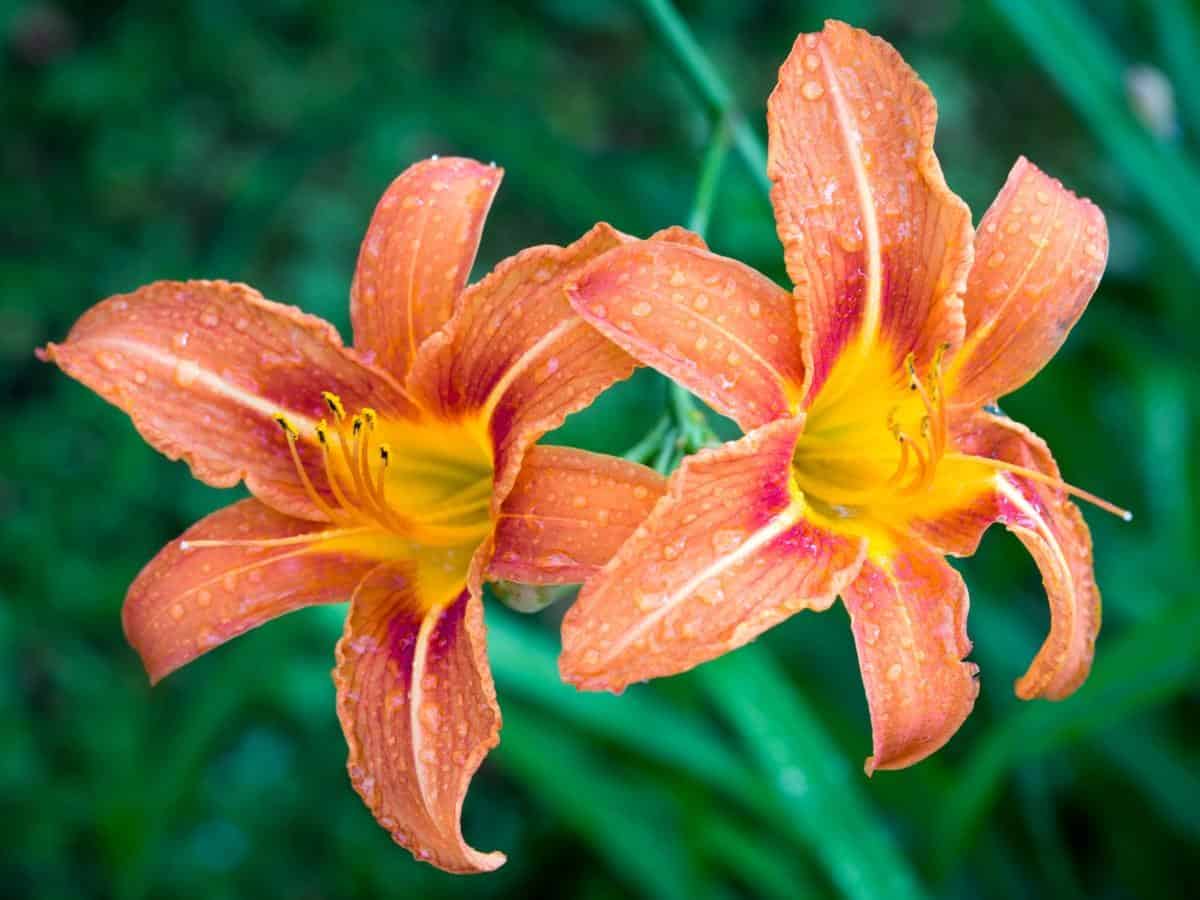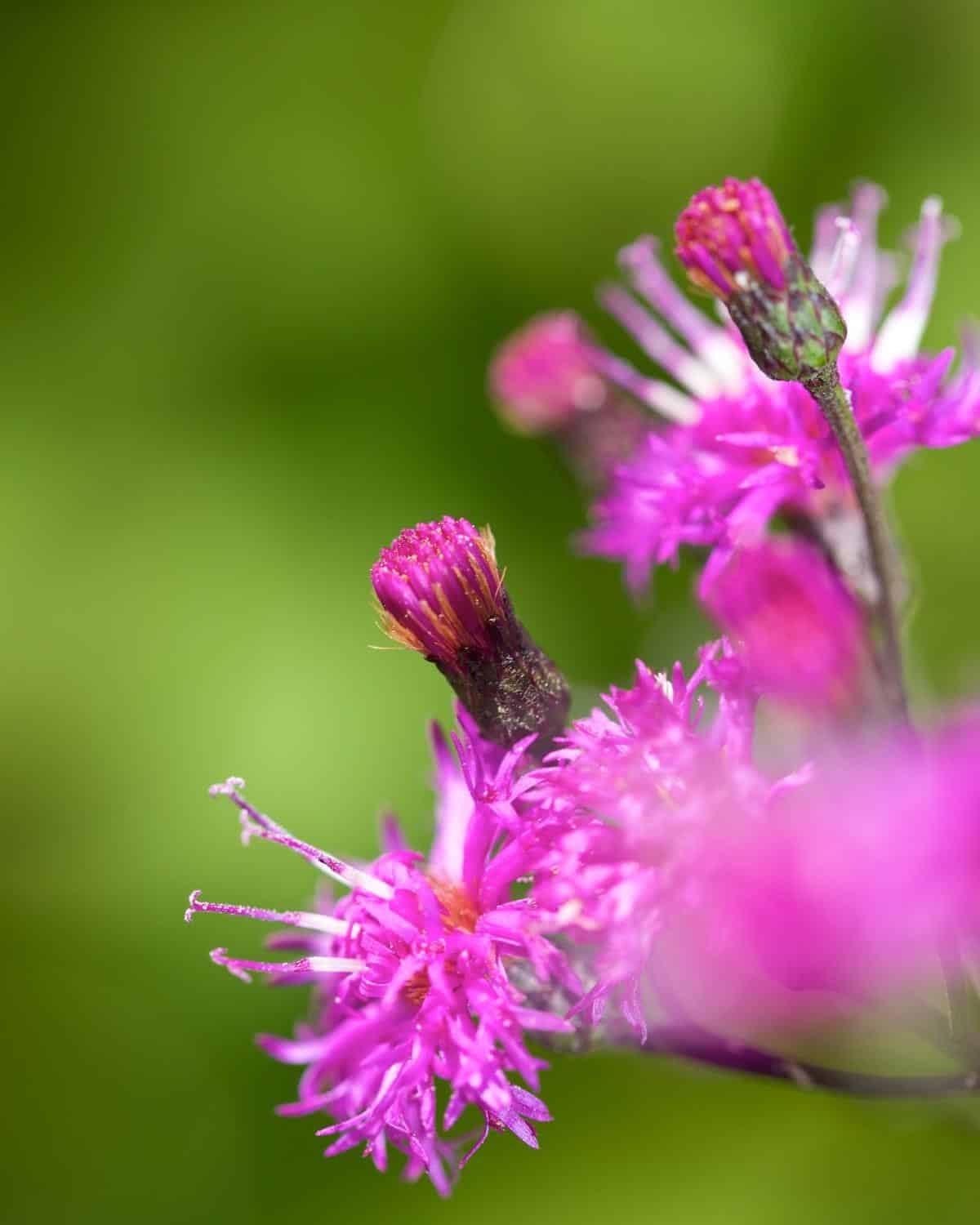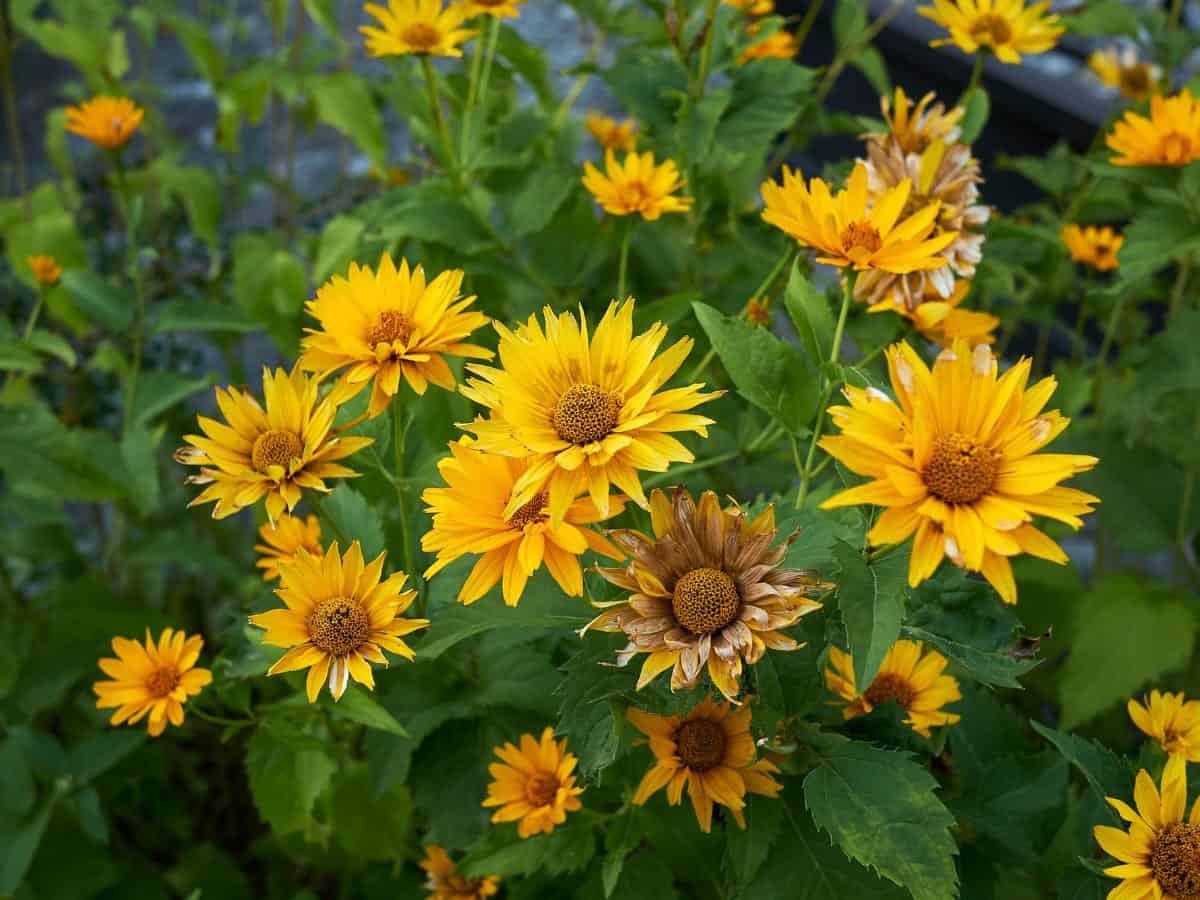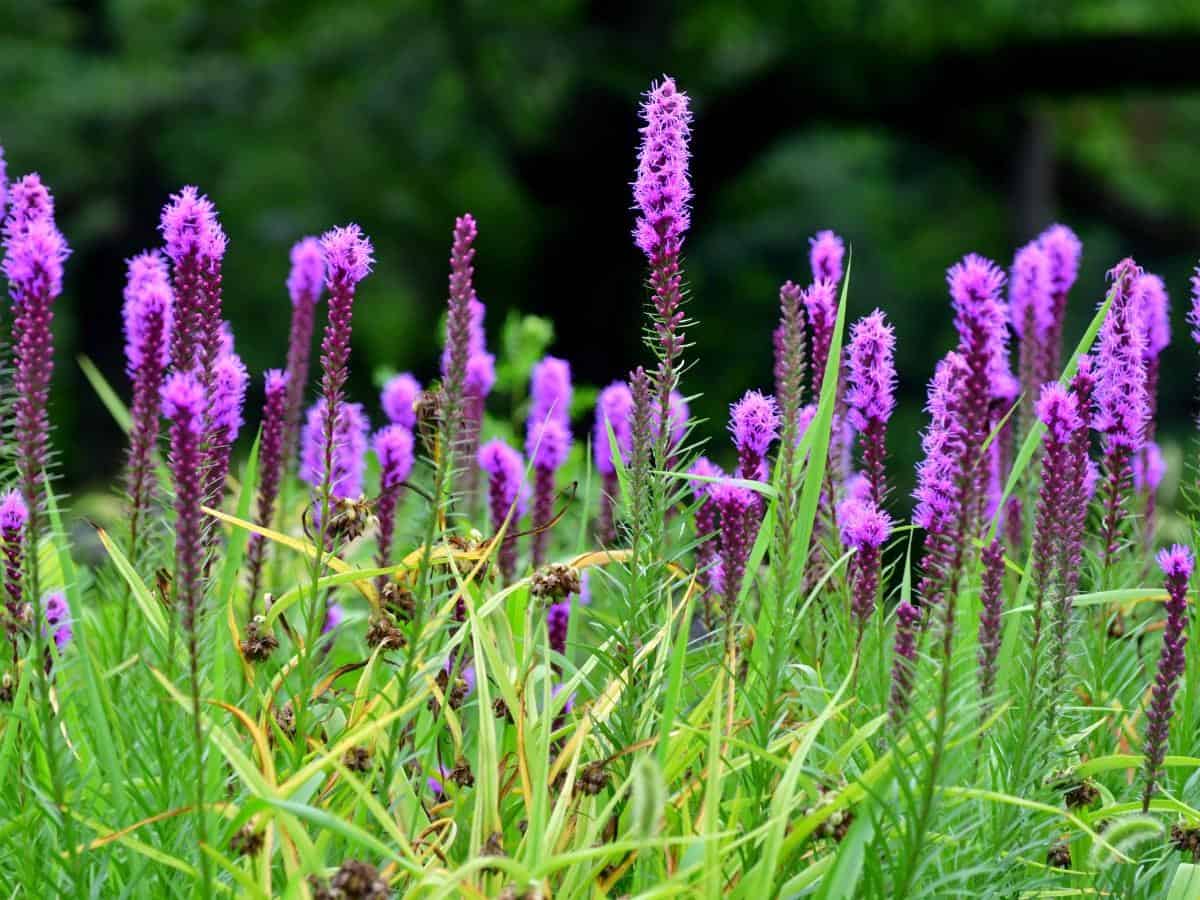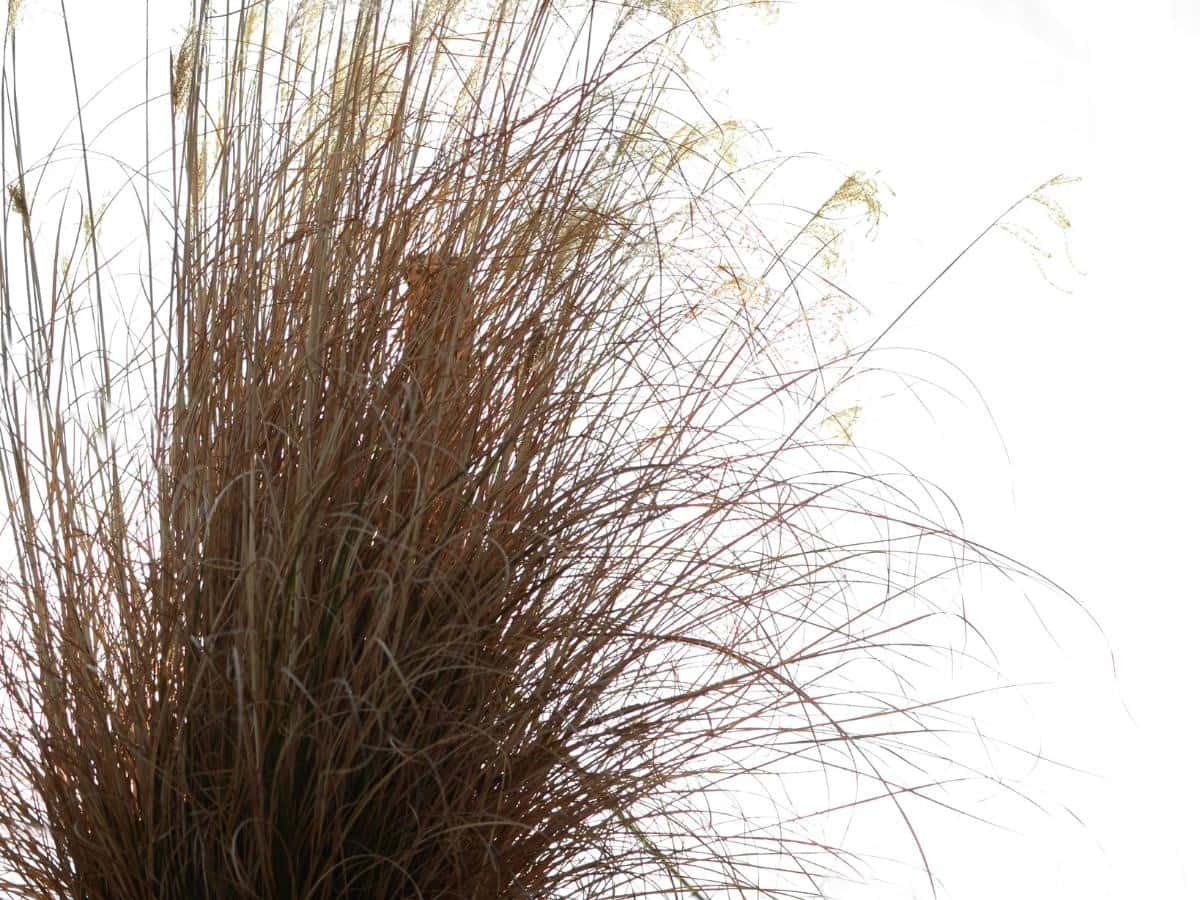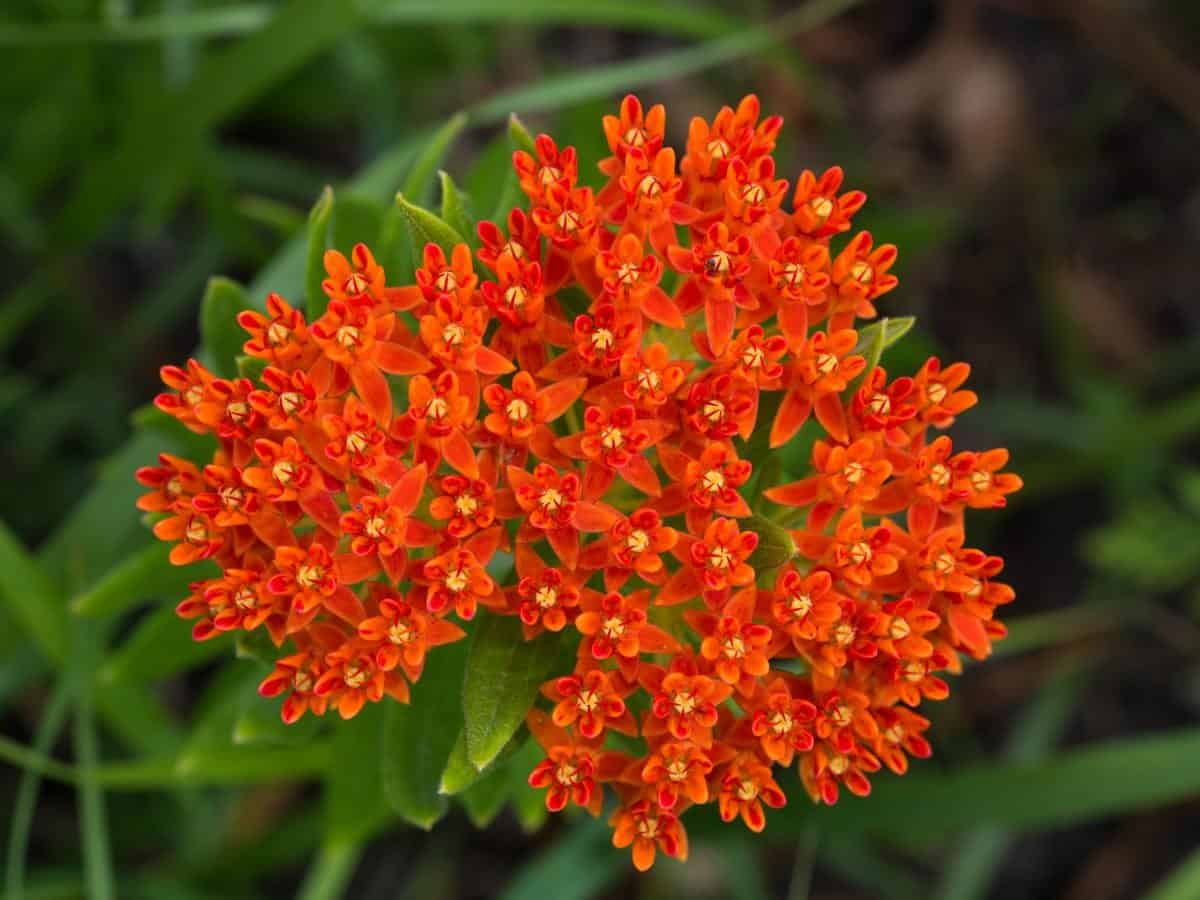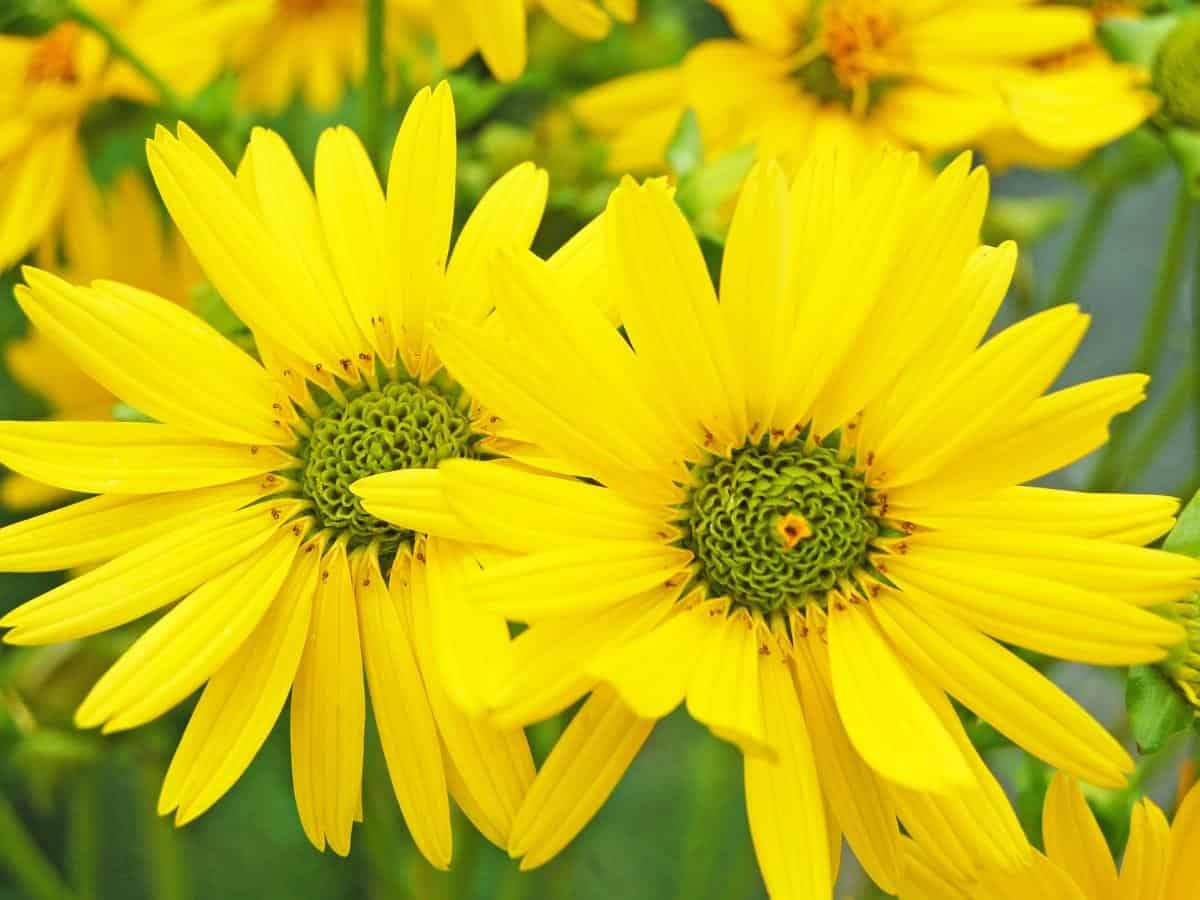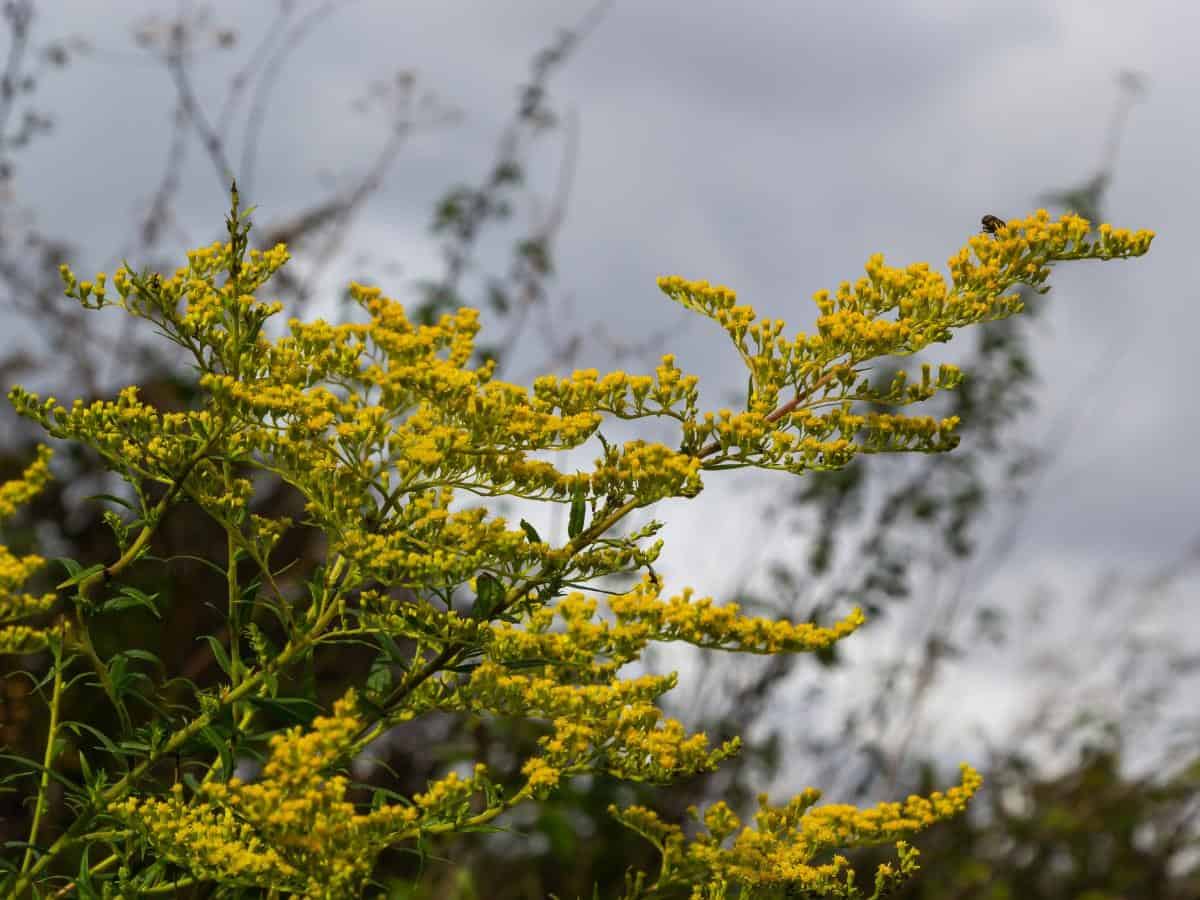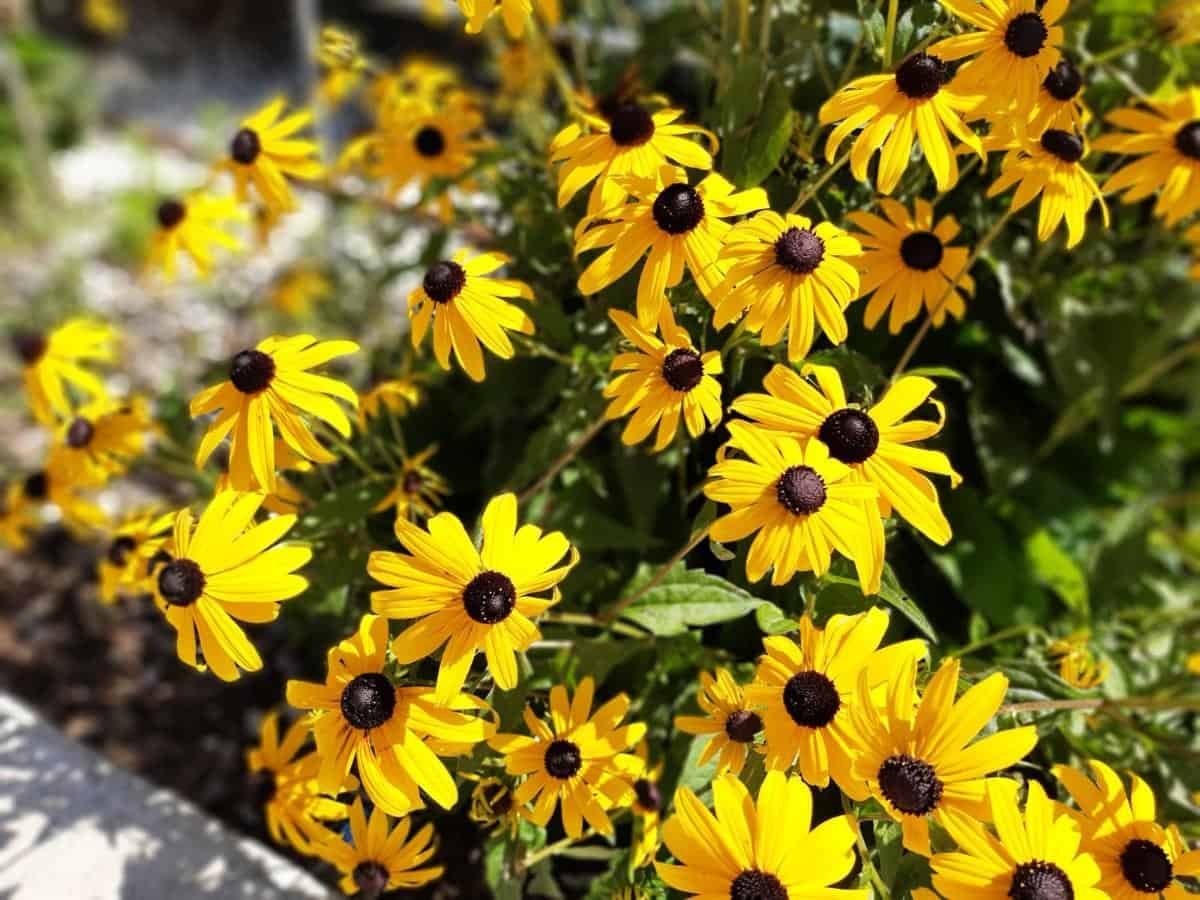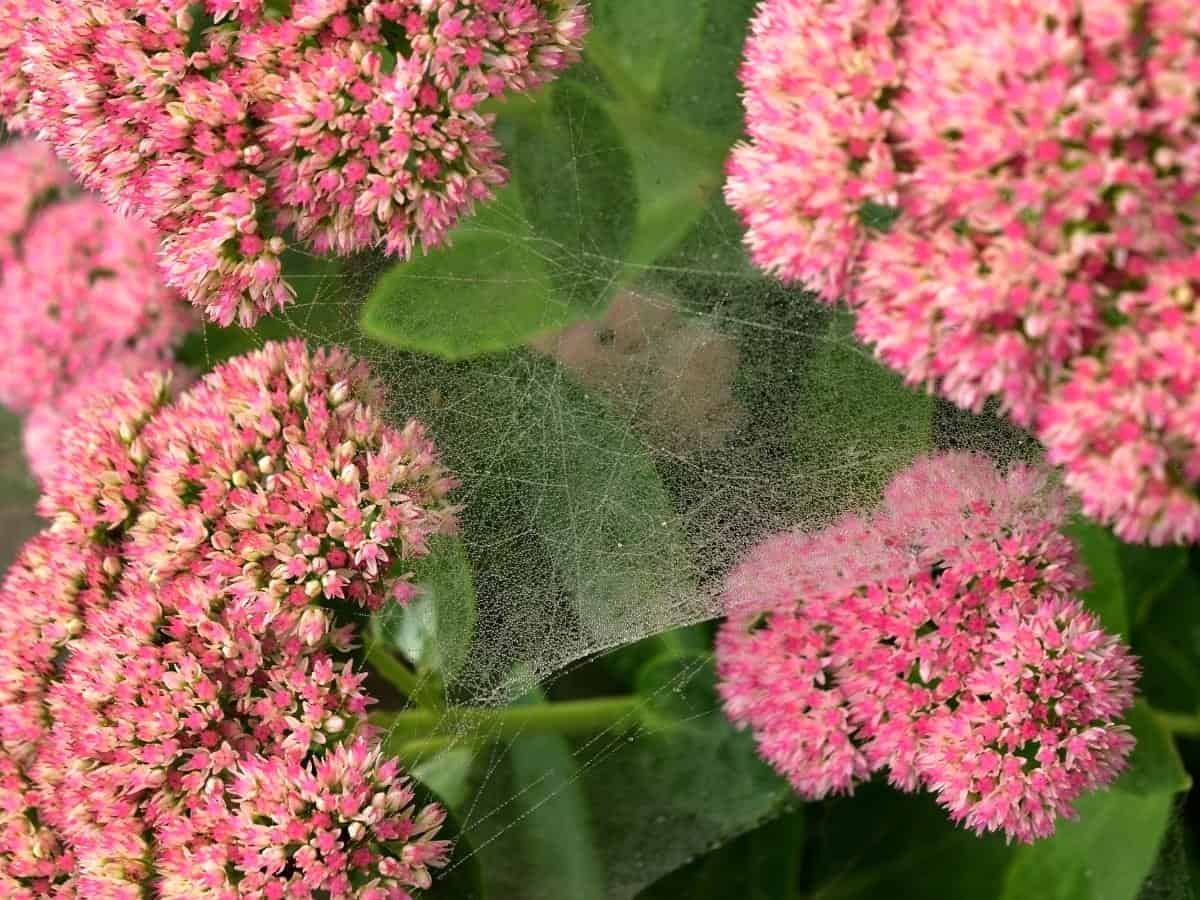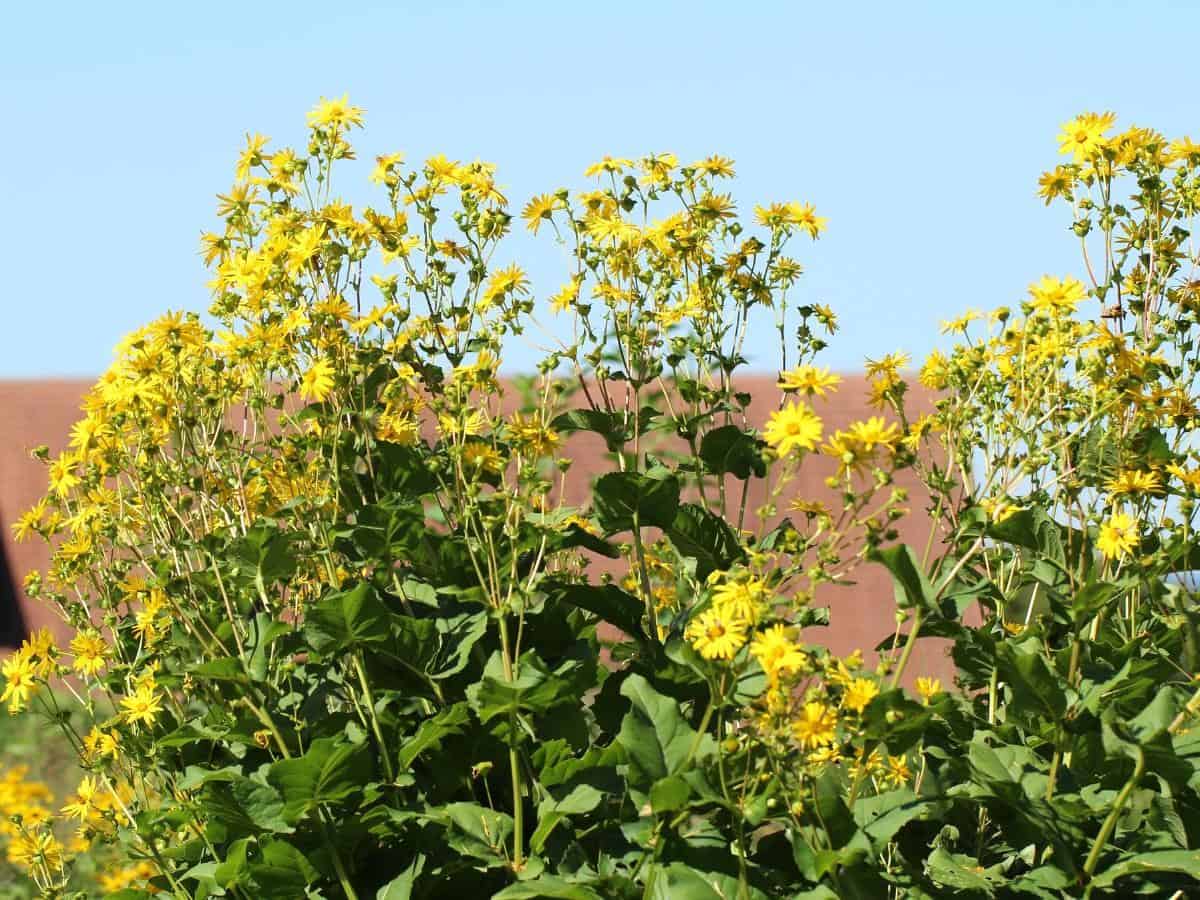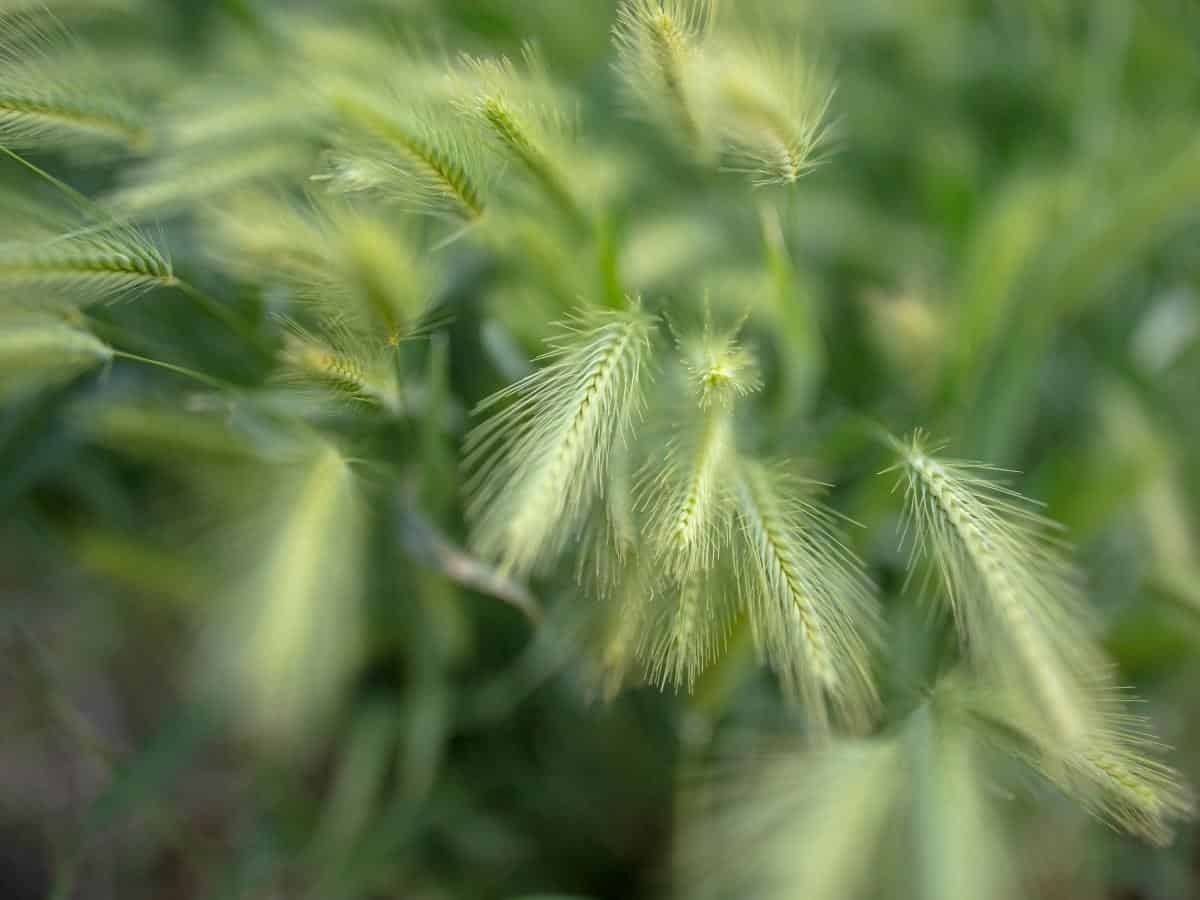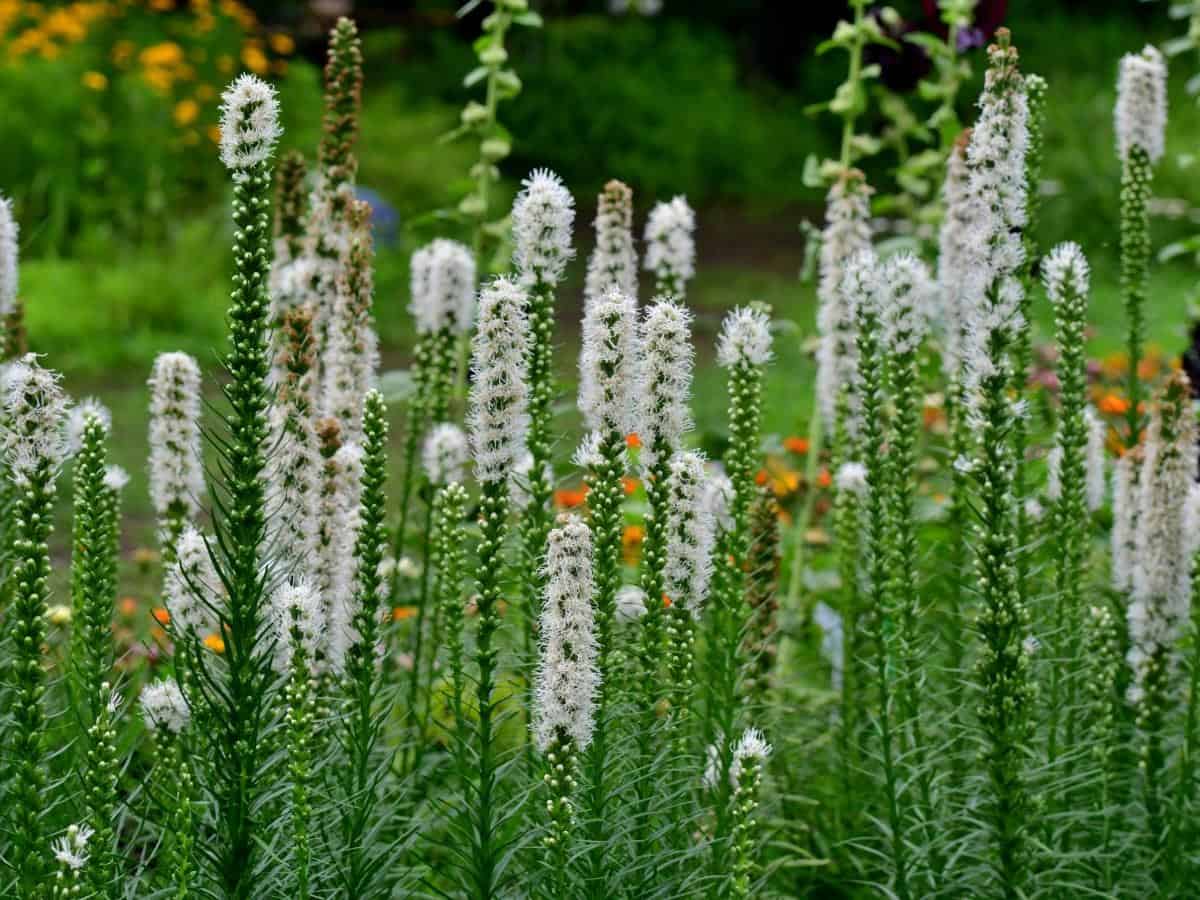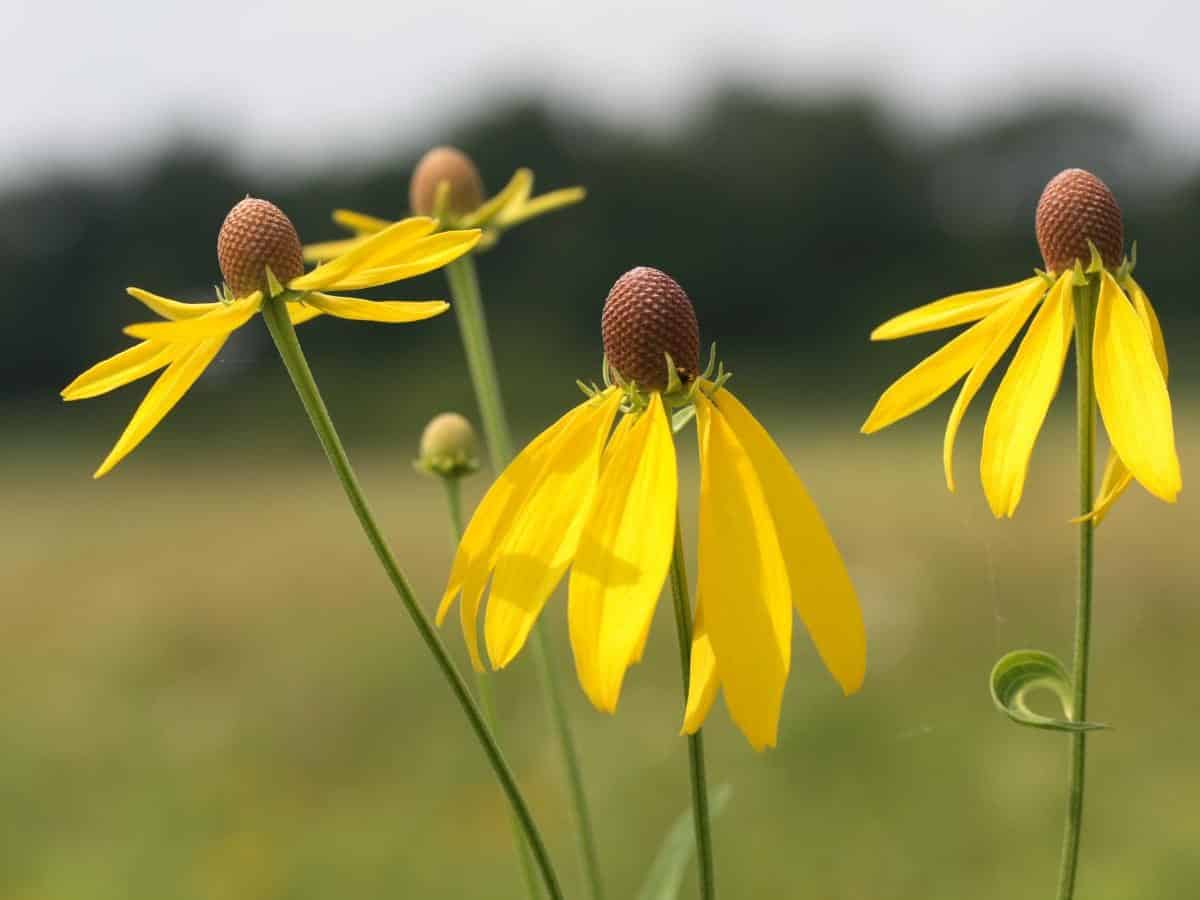Clay soil can be notoriously difficult to work with, characterized by its dense and wet nature. In full sun, it can become as solid as a brick, severely limiting the movement of water and air essential for plant growth. It’s crucial to have a thorough understanding of clay soil before attempting to cultivate plants in this type of soil. Some species are naturally more tolerant of these conditions, helping to improve drainage and alter the texture of the soil over time.
While other factors like USDA hardiness zones and sun exposure also play a significant role in determining which plants thrive in clay soil, there are 25 notable exceptions that do exceptionally well in this type of environment. Take a look at these top performers!
Aster
Aster species exhibit a stunning range of colors, featuring blue, white, red, purple, and pink varieties. For optimal growth, these perennials demand well-draining soil with a slightly acidic pH. They thrive in full sun to partial shade conditions. The ideal USDA growing zones for Asters are 3-8. One of the notable characteristics of Asters is their ability to bloom late into the season, often persisting until frost sets in.
Although they can tolerate clay-heavy soils, it’s essential to ensure proper drainage. If you’re working with heavy clay soil, consider double-digging or planting the Aster in a raised bed to achieve the necessary drainage.
Switch Grass
Panicum virgatum, commonly known as switchgrass, boasts a range of characteristics that make it an attractive addition to many gardens. Its scientific name is backed up by its pink-colored varieties, which thrive in medium to wet soils with a mix of clay and sand. When it comes to sunlight, switchgrass is happy to receive full sun to partial shade, making it suitable for USDA growing zones 5 through 9.
This tall, upright grass forms clumps and produces feathery flowers later in the season.
One of its greatest advantages is its low-maintenance nature – simply divide and prune as needed, and this plant will practically take care of itself. While it prefers moist soils, switchgrass can adapt to drier conditions, making it a versatile choice for gardeners.
Eulalia Grass
Miscanthus sinensis is a popular ornamental species that boasts a range of color varieties, including striking Silver and copper hues. To thrive, this plant requires well-draining soil with medium moisture levels and average sunlight exposure. Its hardiness allows it to grow successfully in USDA zones 5-9. One notable characteristic of Miscanthus species is their tendency to form clumps and self-seed, which can sometimes be a challenge for gardeners.
Despite this, the plants are surprisingly adaptable and can thrive in a wide range of soil types, from light and sandy to heavy clay.
Tickseed
Coreopsis, also known as tickseed, is a North American native plant that boasts impressive hardiness and a plethora of benefits. Its flowers come in a vibrant array of colors including yellow, red, pink, and orange. This low-maintenance perennial thrives in well-draining soil and can tolerate full sun to part shade conditions. It’s a versatile plant that adapts well to different environments, but prefers a medium with suitable drainage.
Additionally, it has the added advantage of being drought-resistant, making it an excellent choice for gardeners looking to add some beauty and resilience to their outdoor spaces.
Coneflower
Echinacea purpurea, commonly known as coneflowers, are resilient perennials that thrive in a range of conditions. While the most familiar variety is a vibrant purple, newer hybrids have introduced a kaleidoscope of colors, including orange, gold, red, and pink. These adaptable plants can withstand challenging soil types, such as rocky and clay, as well as varying levels of humidity, heat, and drought.
With a tolerance for both full sun and part shade, coneflowers are an excellent choice for gardeners in USDA growing zones 3 to 9.
Sweet Flag
Acorus gramineus, also known as Sweet Flag, boasts a vibrant greenish-yellow hue. This ornamental grass can flourish in damp environments, even thriving when fully submerged in water. Its ability to spread through underground rhizomes makes it an ideal choice for areas prone to erosion. While it can be invasive, Sweet Flag’s controlled growth ensures it won’t overtake surrounding vegetation.
With its tolerance for full sun to partial shade and adaptability to USDA growing zones 6-9, this low-maintenance grass is perfect for gardeners seeking a unique, water-loving addition.
Fountain Grass
Fountain grass (Pennisetum alopecuroides) boasts an endearing charm due to its feathery panicles that resemble fluffy clouds. This ornamental grass thrives in medium to wet soil conditions with full sun to partial shade exposure. In terms of hardiness, fountain grass is suitable for USDA growing zones 6-9. While loamy soil is preferred by these plants, they can also flourish in clay-based soils.
What’s more, the variety of colors and heights available adds to their appeal, with most species exhibiting perennials characteristics in warmer regions.
Wild Bee Balm
Monarda fistulosa, also known as wild bee balm, is a versatile plant that thrives in well-draining soil with moderate moisture levels. While it can tolerate full sun to partial shade, it excels when given dry conditions. The plant’s striking flower heads, resembling sparklers, are a highlight of its beauty. To promote bushier growth, simply pinch back the stems at an early stage in the growing season.
Arkansas Blue Star
Arkansas blue star (Amsonia hubrichtii) is a charming plant with delicate, willow-like foliage that adds texture to borders. Its light blue, star-shaped flowers bloom in late spring, followed by seed pods and eventually golden fall foliage. While it tolerates most soils, it prefers well-draining conditions and can’t handle prolonged drought. In the right settings, it thrives under full sun to partial shade, making USDA growing zones 5-8 its sweet spot.
Daylily
Hemerocallis, a species of flowering plants, boasts an impressive array of color varieties including purple, yellow, orange, pink, and red hues. Thriving in environments with well-draining, moist soils, these plants require full sun to truly flourish. With a growing zone range of 3-9 according to the USDA, daylilies are remarkably adaptable.
What sets daylilies apart from other blooms is their remarkable tolerance for various conditions.
They may only bloom for a single day, but they do so in abundance, making it difficult to find a flower that can match this hardiness.
When it comes to soil, daylilies are surprisingly accommodating. While they excel in fertile, loamy soils, they also exhibit a remarkable ability to thrive in clay-based soils. This adaptability makes them an attractive option for gardeners with varied terrain.
New York Ironweed
Vernonia noveboracensis, a vibrant and robust wildflower, stands tall at 5-7 feet in height. Its compact clusters of small, rich purple flowers are perfectly arranged atop its stem, showcasing the plant’s remarkable beauty. This perennial thrives in medium to wet soil with slightly acidic conditions, rich in nutrients and receiving full sun exposure. The New York ironweed is well-suited for USDA growing zones 5-9, making it an ideal choice for gardeners within this region.
Its affinity for clay soil and damp conditions makes it a natural fit for areas with high water tables or heavy rainfall.
Perennial Sunflower
Perennial flowers may not be as flashy as their annual counterparts, the sunflowers, but they certainly hold their own charm in a garden setting. Among the most appealing species to cultivate are ox eye (Heliopsis helianthoides), false sunflower (Helianthus x laetiflorus), and swamp sunflower (Helianthus angustifolius).
Interestingly, all of these varieties share some common characteristics – they thrive in well-draining soil with full sun exposure, making them suitable for USDA growing zones 4-9. Notably, their brown and yellow coloration adds a touch of warmth to the garden landscape.
Prairie Blazing Star
The Liatris pycnostachya, also known as prairie blazing star, is a resilient plant that can thrive in a variety of conditions. While it can tolerate wet clay and other harsh environments, it does require well-draining soil with medium moisture levels to truly flourish. In fact, the plant’s survival depends on its ability to dry out slightly during the winter months. This adaptability makes it an ideal choice for USDA growing zones 3-9.
One of the unique characteristics of this flower is its top-down blooming pattern, where the bottle-brush blooms start at the tip and slowly work their way down the stem, a trait common among Liatris species.
Big Bluestem
Big bluestem (Andropogon gerardii) thrives in warm-season conditions with full sun exposure. This adaptable grass is renowned for its exceptional erosion control and ornamental value. Its tolerance of diverse soil types allows it to flourish in a range of environments, including moist and fertile conditions that promote robust growth. While it may not perform as well in dry soil, the plant still exhibits impressive resilience.
Butterfly Weed
Butterfly weed (Asclepias tuberosa) is a perennial native to North America, boasting vibrant flowers in a medley of red, orange, and yellow hues. These colorful blooms are a magnet for butterflies, hummingbirds, and bees. This hardy plant thrives in well-draining soil with average moisture levels, tolerating poor conditions with its impressive taproot that allows it to survive extended droughts. Its ability to flourish under full sun makes it an ideal addition to USDA growing zones 3-9.
Cup Plant
The Silphium perfoliatum, also known as Cup Plant, boasts a striking yellow color. This herb thrives in moist, rich soils with full sun exposure, making it ideal for USDA growing zones 3-9. One of its most distinctive features is the formation of ‘cups’ where the stems and leaves meet, which often collect water. This unique characteristic makes it a magnet for butterflies and birds, who are drawn to this variety’s popularity.
Once established, Cup Plant can tolerate some drought and excels in wet and clay soils, making it a resilient addition to any garden.
Goldenrod
Goldenrod, scientifically known as Solidago canadensis, boasts a range of vibrant yellow color varieties that thrive in well-draining, slightly acidic soils under full sun. This hardy perennial excels in USDA growing zones 3-9. Despite being often mistaken for the allergy-prone ragweed, goldenrod poses no threat to your sinuses. In fact, it’s surprisingly tolerant of poor soil types, including clay, as long as proper drainage is maintained.
Black-Eyed Susan
With its scientific name being Rudbeckia hirta, the Black-eyed Susan is a versatile and low-maintenance flower that can thrive in most gardens. Its color varieties range from bright yellow to vibrant orange, offering a pop of color during its blooming season. When it comes to soil requirements, this plant is quite adaptable, tolerating a range of conditions as long as the drainage is well-draining. It does best in medium-moisture, average soils that receive full sun.
Found in USDA growing zones 3-7, the Black-eyed Susan’s ability to bloom for months and live for years makes it a staple in many gardens.
Autumn Joy Sedum
Hylotelphium ‘Autumn Joy’ boasts a range of color varieties, including lavender purple, rust-red, and pink. To thrive, this plant requires well-draining soil with an average pH level. It’s perfectly happy basking in full sun, making it an ideal choice for USDA growing zones 3 through 9.
This hardy, low-maintenance plant excels in poor, gravelly, or sandy soils, but will also tolerate loam or clay as long as the drainage is sufficient to prevent waterlogged conditions.
With its ability to flourish under a variety of soil types, Hylotelphium ‘Autumn Joy’ proves to be a reliable and easy-to-grow addition to any garden.
Compass Plant
The Compass Plant (Silphium laciniatum) boasts a range of features that set it apart from other prairie plants. Its most striking characteristic is its bright yellow flowers, which stand tall above its foliage. This plant thrives in well-draining soil with average moisture levels and full sun exposure. It’s hardy in USDA growing zones 3 to 8. Interestingly, while Compass Plants prefer a range of soils, they particularly enjoy the rich, dense quality of clay soil.
Canadian Wild Rye
Canadian wild rye (Elymus canadensis) stands out for its adaptability to diverse soil conditions and environments. This cool-season, clump-forming grass boasts a gentle, arching habit that makes it easily cultivable from seed. Its impressive resilience is further highlighted by its tolerance of air pollution, drought, and full sun exposure, making it an outstanding choice for growing in USDA zones 3-8.
Blazing Star
The Liatris spicata, commonly known as Blazing Star, boasts striking bottle-brush flowers that bloom for extended periods and feature grassy foliage. Its unique appearance often attracts monarch butterflies, which are drawn to the plant’s nectar. The Blazing Star thrives in well-draining, fertile soil with full sun exposure. It’s hardy in USDA growing zones 3-8.
While it tolerates moist conditions, it’s essential to avoid waterlogged soil during the winter months, as this can be detrimental to its health.
Drooping Coneflower
The Ratibida pinnata, also known as the drooping coneflower, boasts a more rustic appearance compared to its Mexican hat counterpart (Ratibida columnifera). Despite this, it shares the same sunny disposition with bright, curved petals. This hardy perennial thrives in well-draining soil and medium moisture, though it can adapt to some drought. Its tolerance for varying conditions makes it an attractive option for gardeners in USDA zones 3-8.
Indian Grass
Indian Grass (Sorghastrum nutans) is a versatile perennial that boasts an impressive range of characteristics. Its scientific name is Sorghastrum nutans, with the most common color variety being light brown. When it comes to soil requirements, Indian Grass prefers well-draining, average conditions, and can thrive under full sun exposure. Additionally, this plant is adaptable to USDA growing zones 4-9.
As the season progresses, Indian Grass begins as a compact clump, only to produce tall flower stalks by mid-summer. One of its most attractive features is its year-round appeal, remaining visually stunning even through winter. Furthermore, this hardy perennial can tolerate dry, infertile soil and heavy clay, making it an excellent choice for gardeners seeking low-maintenance yet striking plants.
Sea Holly
Sea holly (Eryngium yuccifolium) is a striking addition to any flower garden, boasting thistle-like blooms that set it apart from other flora. This perennial prefers well-draining soil, whether sandy or clay-based, and thrives in full sun conditions. Its unique flowers can remain vibrant for days when used as cut arrangements, making them a thoughtful gift or centerpiece.
With USDA growing zones ranging from 3 to 9, sea holly is adaptable to various climates and can be grown successfully across a significant portion of the country.
